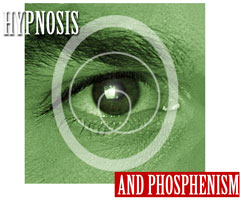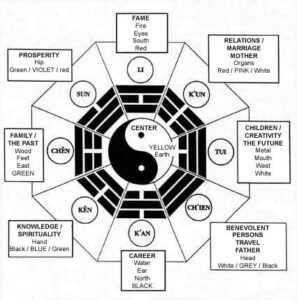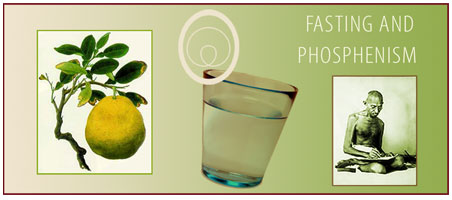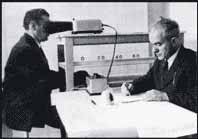SITEMAP THEMES I: IBOGA
IBOGA

IBOGA
In the past few years, the public’s interest for iboga has considerably developed. There are now many Internet sites on the subject. It is at the same time considered an hallucinogenic drug that is banned in certain countries, a cure for addictions (heroin, cocaine, alcohol) and an initatory plant used by the Bwiti tradition in Africa.
Frenchman Jean-Claude Cheyssial has directed two documentaries about iboga: the sacred root, in 1995 and the night of the Bwiti, in 1997. More recently, Vincent Ravalec, Mallendi and Agnès Palcheler wrote together Sacred root, iboga initiation, in 2004. This book contains constant warnings: ‟Iboga is not a recreational drug…” These warnings match the ones contained in The night of the Bwiti: ‟One must know that taking iboga generates a pain that is even more difficult to bear than the addiction itself…”
It is indeed impossible to classify iboga as a recreational drug. Opposite extreme of entertainment, it does not invite the individual to escape from reality, but instead produces an encounter with the self, with one’s unconscious, and with the Ancestors of african spirituality. Using it is a ritual. It always accompanies a rite of passage: death of the old self and rebirth. Giving up one’s addiction can be considered such a process. It is as such that it creates a passionate interest in the scientific community who wonders what mechanisms take place in the severance from drugs.
In 1998, Anderson made the assumption that iboga, when ingested as a shamanic practice or as psychotherapy, induces a state that is related to the phase of REM sleep of the foetus and that is characterized by its plasticity, allowing the integration of traumamatic experiences.
Michel Jouvet, a biologist specialized in the REM phase of sleep developed the following hypothesis: dreaming appears to be a kind of ‟neurological programming” of the brain. Dreaming is responsible of the brain’s ‟software”; it reconfigurates and reinitializes the system. As such, it is the caretaker of our habits, our needs, our individuation.
This metaphor is used in iboga seminars: testimonies mention changes in programming, files being deleted. A person who attended one of these seminars after a difficult separation with the person he loved, described that, at the end of the seminar, it felt as if the neurological connections related to this ordeal had been erased, as if the event never took place. This seems to account for a renewal of neurological connections, a kind of fresh start.
Another interesting property of iboga lies in the possibility of manipulation of the imaginary material whether by the therapist, the Nganga or the participant. It is always possible to stop on an image, to ‟rewind” and think about an alternative. The experience can be directed at all times. There is no loss of consciousness.
The frame of mind of the individual who takes iboga plays a very important role. For the people of West Africa, it constitues a rite of passage. The sacred root allows people to release themselves from all psychological and social blocks accumulated during childhood, to communicate with the dead and to obtain a direction in life.
For a person coming from a different culture, different visions will take place.
Here the testimony of a Phosphenist who attended a seminar in the french region of Ardèche. The description of his experience refers to the works of Doctor Francis Lefebure. You can find more information on the website www.phosphenism.com.
Saturday night:
First dose of iboga
Each participant is given a spoonful of powdered iboga by the Nganga Mallendi. The taste is truly disgusting, extremely bitter.
A few minutes later, I am starting to feel vibrations in the whole of my body, in the chakras located in the palm of my hands and in the sole of my feet.
When the Nganga approaches to give us another dose, the vibrations amplify and my field of vision starts to change
After the third dose, I feel and intense vibratory state and I close my eyes. I see a gigantic phosphene though I have not focused on a source of light. This phosphene starts rotating then takes the shape of a rotating cogwheel. I understand that this first vision is a symbol of the chakras. I start feeling extraordinary fast and powerful rotations in my whole body.
The visions:
I have noticed that there are three types of visions:
The first is the organization of the visual chaos, with my eyes closed. In the beginning, the phosphenic substance (a spontaneous inner light, it usually is perveived as a network of moving, colored lines that organize themselves in kaleidoscopic patterns) filled my field of vision and an image appeared. This image became sharper and sharper until it became as intense as a vision. It then reverted back to the phosphenic substance before reorganizing itself in a different vision. I was struck by the obviousness of the assumption of Dr Lefebure: the phosphenes are a gate to clairvoyance.
The second type of vision occured with my eyes open. A 3D animated image appeared in front of me. It was a very surprising phenomenon. The third type of vision took place on a medium, a wall or a flat surface that took the role of a screen. I noticed that these images had a similar theme.
The main visions:
I cannot remember all the visions, as so many passed in front of my eyes, but I can remember the following ones:
For a long period of time, I perceived urban sceneries, railways, motorways, as if I was flying above them. Then, stone houses started passing by, one after the other. I did not understand the meaning of these visions; I asked the plant for an explanation but I did not get any answer and the houses kept passing by.
Another episode made a strong impression on me, I was flying above a coastline lined with african huts made of straw. In front of each hut was a man armed with a spear. Then, a gigantic african mask started pulsing in front of my eyes. I went through it and I saw a kind of paper scroll filled with letters and signs above which a text written in an unknown language appeared. I heard a voice saying: ‟Magic words” in my mind, after asking the plant what was the meaning of this vision. Nevertheless, I still could not decipher this message. I wondered if I had been an African in another life.
I experienced a very beautiful vision of a gigantic volcano erupting. Red-orange sparks were projected high in the sky and were falling back in the shape of purple droplets. Spectacular!
A phosphene turned into the sun then moved away at an incredible speed until it became a tiny dot.
I perceived arabesques that conjured impressions of the aztec civilization.
I saw a 3D image of the iboga root, rotating in front of my eyes.
I experienced a rather strange vision. I felt that I was travelling to the remote layers of the astral and found myself facing the Keeper of the Threshold, He who bars the way to the Source, the Self. I had to combat this creature of a devilish appearance. At first, I felt that I would not prevail, that I was going to die. At this moment, a benevolent entity appeared, charged the keeper of the threshold and destroyed it. I do not remember what followed, but I understood that I was protected by powerful spiritual forces. This vision is an exact replica of a dream I had once experienced.
Saturday morning
Spiritual healing by the angels:
As extraordinary as it may seem, I saw with my open eyes, two angels as big as a hand, on each side of my solar plexus. They were healing this chakra with energy. It is important to note that this chakra had been violently damaged 2 years beforehand. Overcome by emotion, I cried of joy for a long time. I felt my solar plexus being emptied of all these repressed emotions.; I was filled with an immense gratitude.
I then felt the surge of Kundalini, from the root chakra to the heart chakra, accompanied by the following vision: in front of me, a stone wall half-opened, letting an extremely bright light filter through.
The following afternoon, I felt extraordinarily open, with a feeling of belonging and understanding.
Saturday night
Midnight, the second night staying up started. The iboga was mixed with honey and thus was much easier to ingest.
I had a very difficult night, I cannot remember very precisely what happened but I do remember feeling attacked on an energy level. My body was completely saturated with vibrations and I could not bear any more rhythms. I felt as if I was going to desintegrate. It was impossible to focus on the flame of the candles, it was unbearable! So, I spent a long time focusing on the ceiling to release the tension in my body.
After a while, I felt that my lower chakras were activated then, massive waves of energy rose from the lower part of my body and accumulated in my chest. I started to feel uncomfortably hot, my tee-shirt was soaked and I had to take it off. The energy was blocked in my throat and kept accumulating in my chest, provoking a sensation of extreme heat. I was almost panicking.
I do not remember how I managed this, but after a while I succeeded in letting the energy rise, little by little, into my throat and my head.
Towards the end of the night, our faces were coated with white kaolin and a mirror was placed in front of each of us. The purpose of this was to let us contact our ancestors. The first vision I experienced was not a face but an immense complex of buildings that I could not perceive entirely. It was very difficult to maintain this vision. As soon as I would move my eyes, it would disappear, replaced by my reflection.
Then, I saw faces. Some of them were fixed, as if drawn with a pencil, and others were animated like a film.
I did not succeed in interpreting any of these visions.
Sunday morning
Once the night over, I felt in an extraordinary state and I went out to admire the sunrise. I did a phosphene and I saw the sun dancing in front of my eyes and rotating. I witnessed the phenomenon described by Dr Lefebure. I then projected the phosphenes I did on the lawn, a process that triggered visions as sharp as the images of a film.
Later, I felt tired. the loss of voice that affected me was probably connected to my throat chakra being unlocked.
I realized that my heart was beating faster than 100 BPM, I seeked the Nganga Mallendi who layed his right hand on my heart. Very quickly, I felt a great heat surrounding my heart and descended progressively. Within a few minutes, my heart was back to a normal rhythm. Mallendi told me that I would not experience that kind of problem any more.
Sunday night, I could at last sleep again after staying up for two nights. The least I can say, is that I went through an immense ordeal and that I lived an extremely powerful experience. I often felt great despair. I also experienced great moments of joy and awakening.
This testimony constantly refers to the works of Dr Lefebure who demonstrated the role that light played in the evolution from animal to human. The discovery of fire was the utmost importance. First of all, fire became the center of the activities of the group. Then, it created a hierarchy in the tribes: those who had the knowledge (the keepers) and the others. This is the origin of shamanism.
According to Dr Lefebure, the explanation is simple. Taking care of the fire meant focusing on it permanently, it was doing phosphenes. When a thought is mixed with a phosphene, it acquires extra energy. It is the phosphenes that allowed the development of the higher brain. They are the foundation of religions. Check Phosphenism, a Scientific Explanation of the Origins of Religion (available for download on the site).
Importante Note
We have done our best to provide you with the most accurate translation of our french website. Nevertheless, it is possible that some language errors may remain. So, don’t hesitate to contact us to communicate them to us.
Thank you for your indulgence and for your consideration of the many hours spent translating all our pages and, more particularly, all the testimonies we share with you so that you may become aware of the impact that Phosphenism can have on those who practice it.
Wishing you the best with your practice of Phosphenism.
Daniel Stiennon (Dr. LEFEBURE School Director, France)









